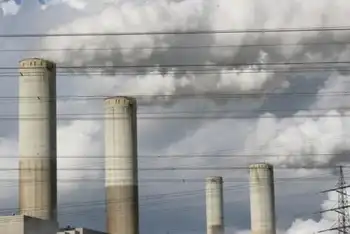Ontario Rate Cap Costs Climb
TORONTO -- - The direct cost of the governmental price cap on retail electricity prices has reached $1.03 billion after a frigid February that prompted record power usage in Ontario, new figures show.
The amount is the difference between the capped retail rate of $4.3 cents a kilowatt-hour paid by residential customers and small businesses, and the wholesale price, which fluctuates according to supply and demand.
While a special fund set aside to cover the difference has accumulated about $1.44 billion in costs and still appears to have a surplus, large power users have yet to receive any relief for what they have paid above the cap.
That means the fund, which is financed by all electricity users, has a shortfall "probably running somewhere around $300 million," said Terry Young, a spokesman for the agency that regulates the power market. Taxpayers are on the hook for that difference.
Figures released by the Independent Electricity Market Operator (IMO) show February alone cost the market power mitigation agreement fund $299 million.
Young cited the unusually cold weather last month for the situation.
"One of the reasons was obviously the high energy demand," said Young, adding average consumption reached 468,662 megawatt-hours a day. "We had a daily average energy demand that was the highest ever in Ontario's history."
As a result, the average price of power also hit record levels of 8.86 cents a kilowatt-hour - more than double the capped retail price.
In November, Premier Ernie Eves announced the price cap amid a growing consumer revolt over soaring hydro prices that followed his decision to open the electricity-generation market to competition last May 1.
Before Christmas, most consumers received initial $75 rebates worth $335 million to offset the higher prices. They have since been sent another $153 million in rebates.
In addition, the difference between wholesale and retail prices in December was $110 million and a further $135 million in January.
A spokesman for Energy Minister John Baird said it's too soon to draw any conclusions about the ultimate cost to taxpayers.
"We've seen record demand and record temperatures both over last summer and so far this winter," said Dan Miles. "But we're only in month 10 of a 48-month plan and we believe that over the long term, the plan will pay for itself."
Miles said Baird has made no decisions yet about offering any kind of relief to large-scale users, who account for 53 per cent of Ontario's electricity market.
Related News

We Need a Total Fossil Fuel Lockdown for a Climate Revolution
LONDON - Growth in renewable power has been impressive over the past five years. But too little is happening in heating, cooling and transport. Overall, global hunger for energy keeps increasing and eats up progress, according to REN21's Renewables 2020 Global Status Report (GSR), released today. The journey towards climate disaster continues, unless we make an immediate switch to efficient and renewable energy in all sectors in the wake of the COVID-19 pandemic.
"Year after year, we report success after success in the renewable power sector. Indeed, renewable power has made fantastic progress. It beats all other fuels in growth and…




